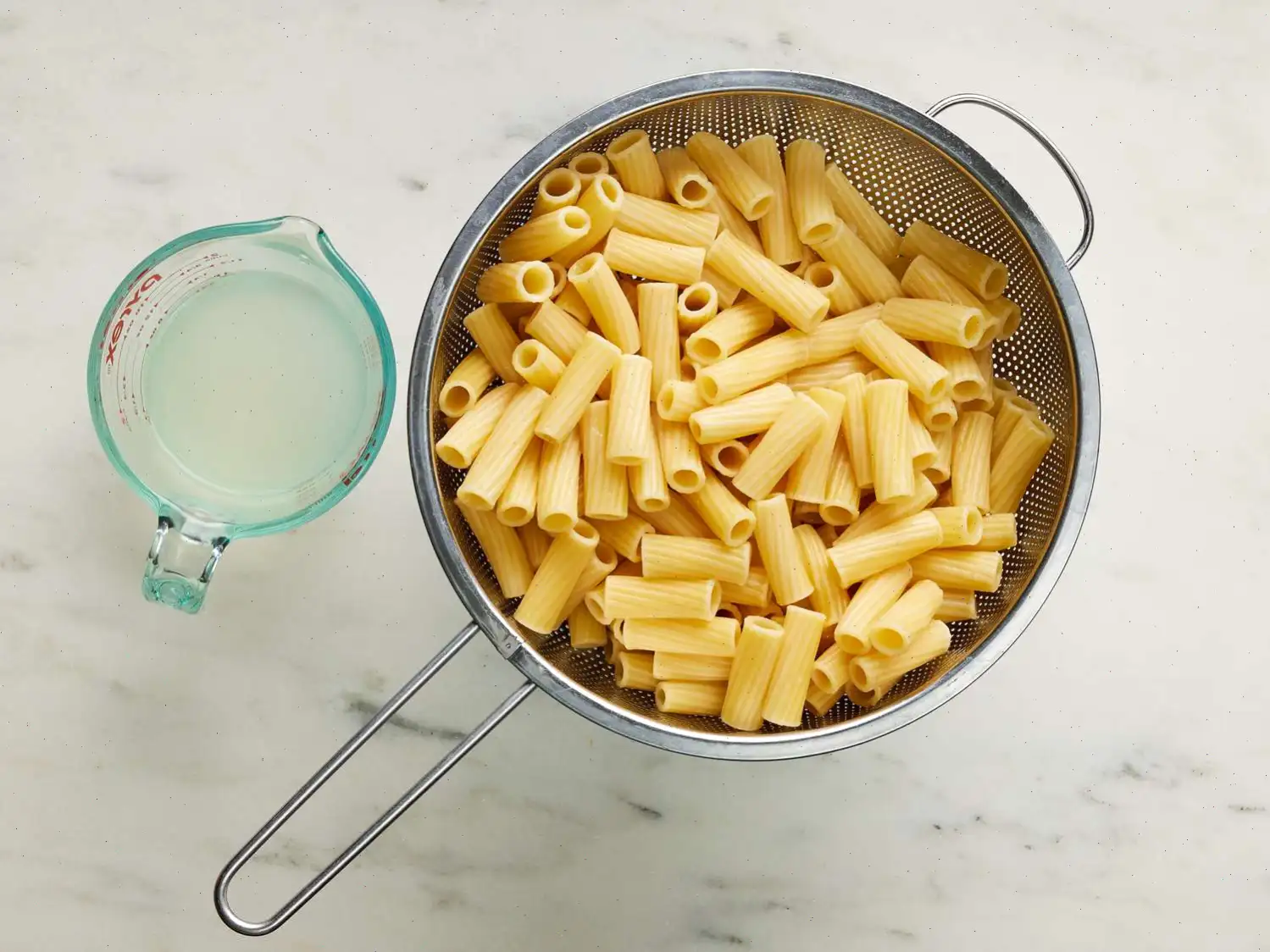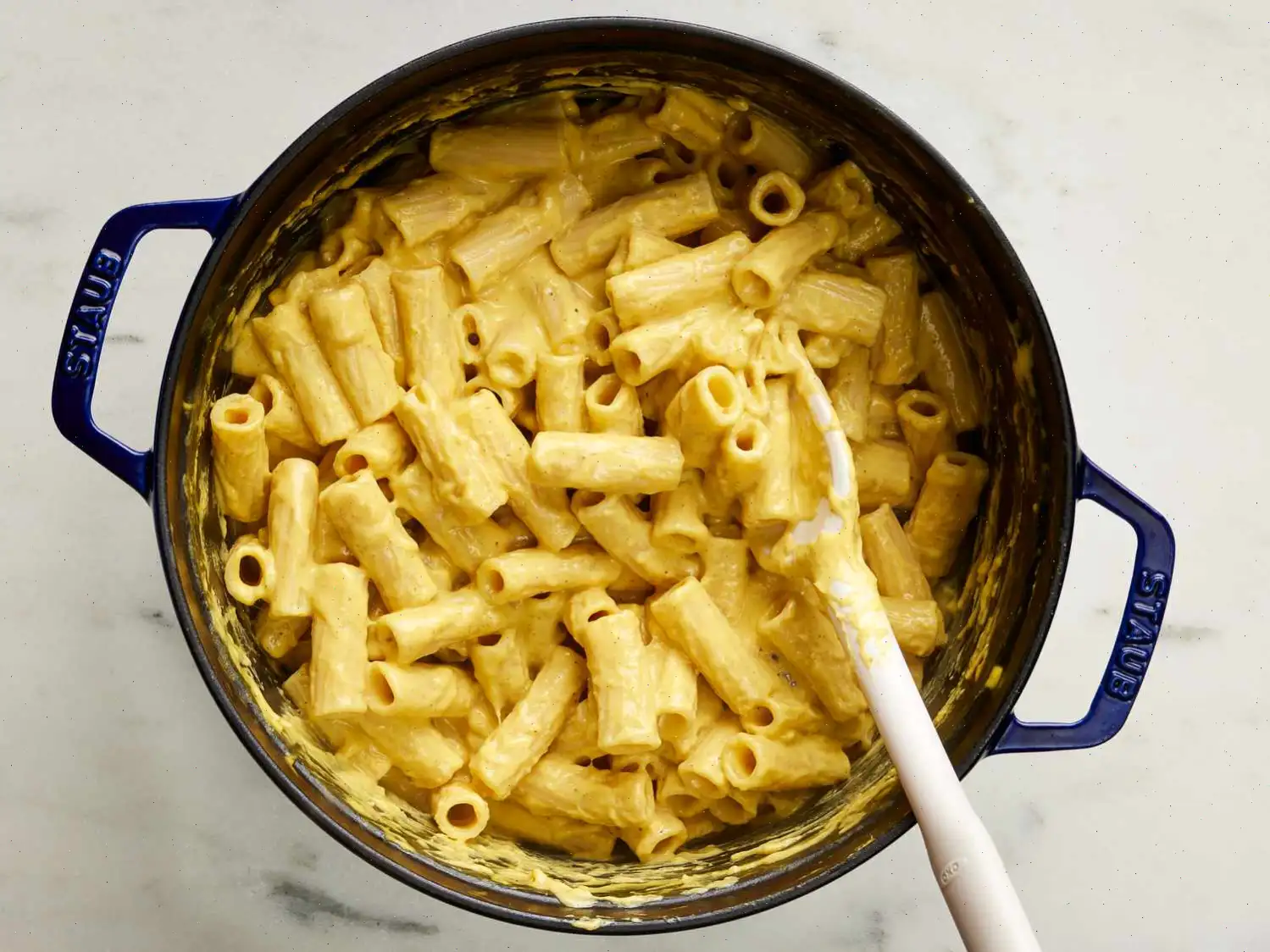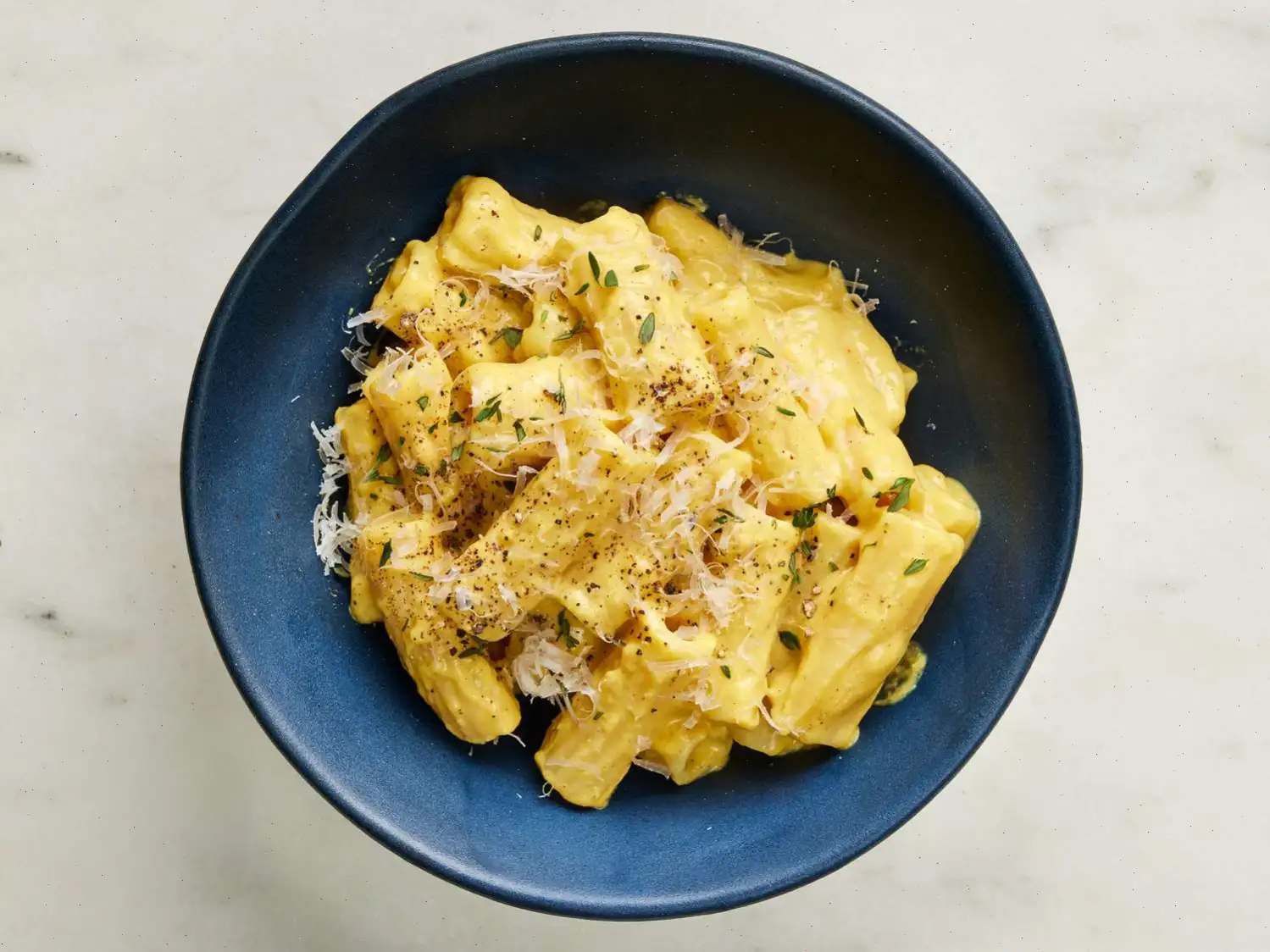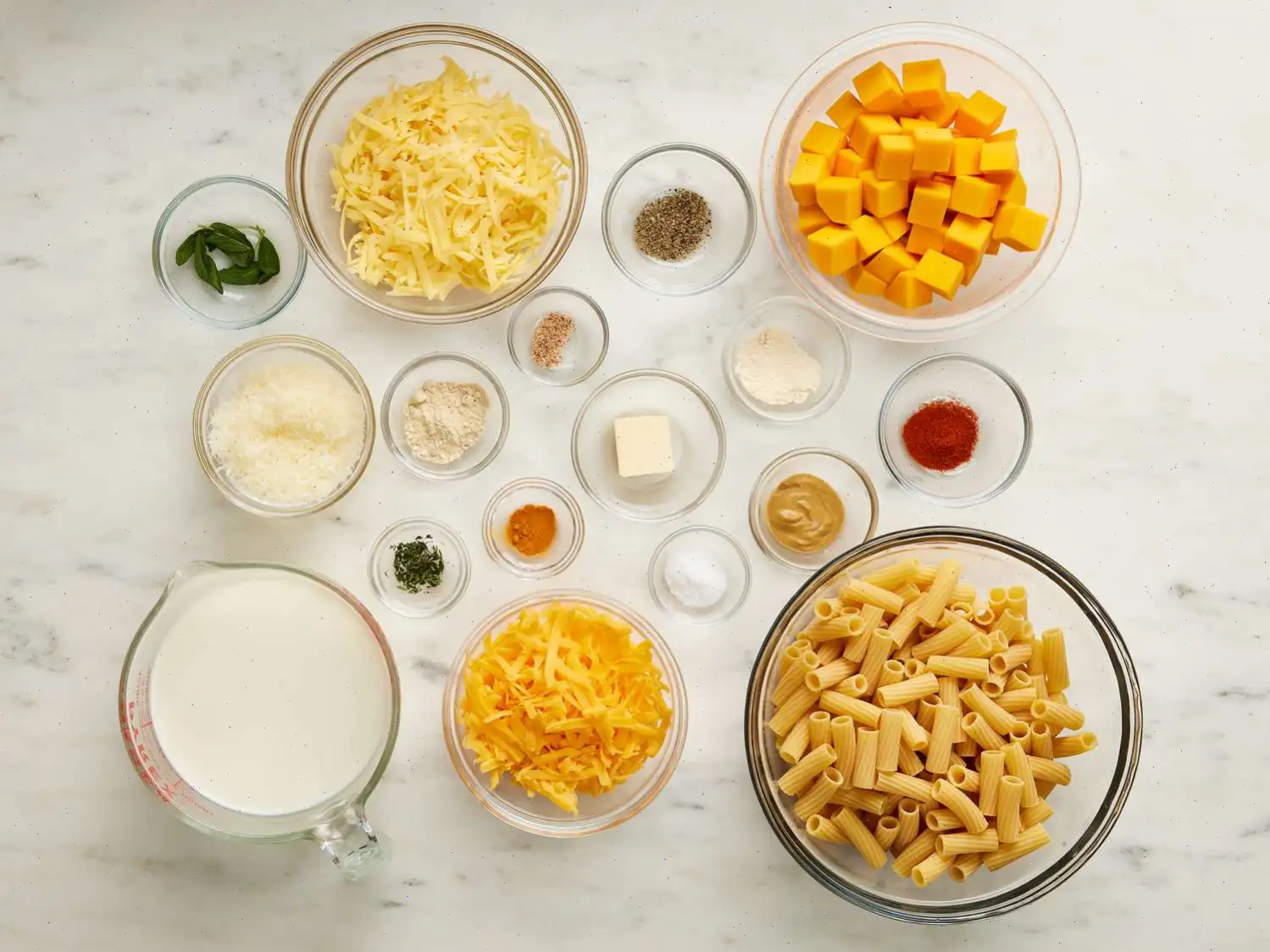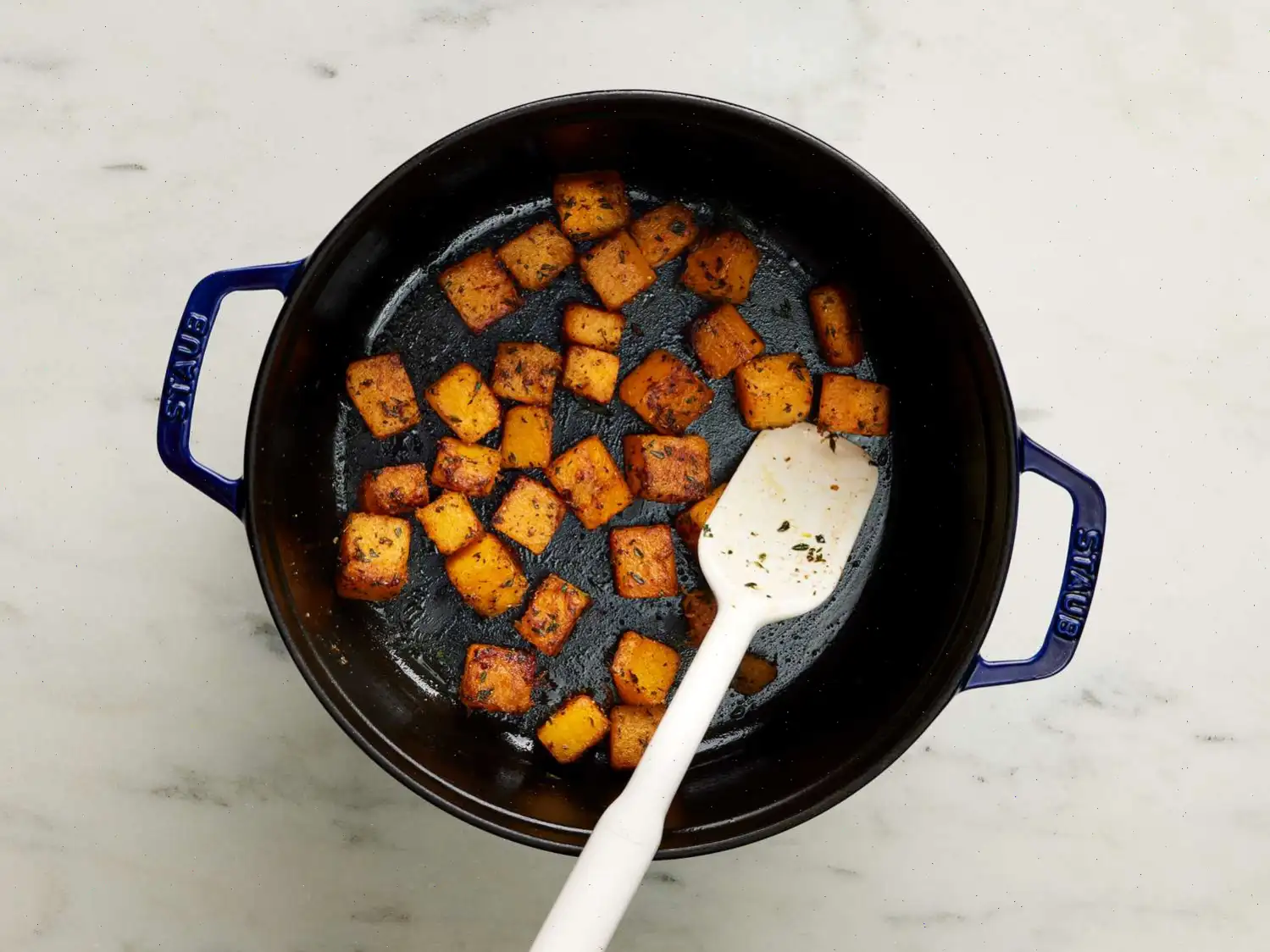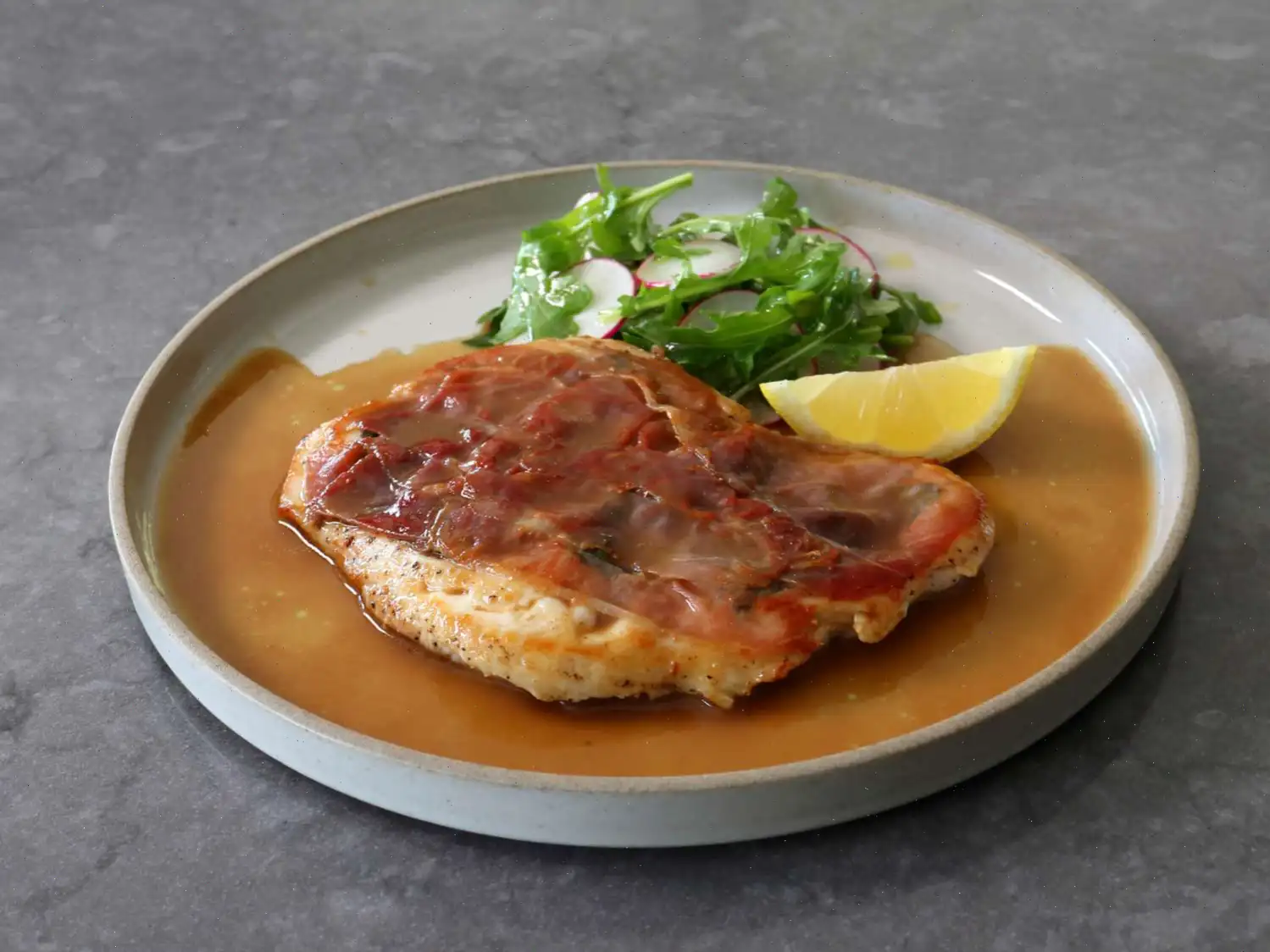
Copycat Trader Joe’s Butternut Squash Mac and Cheese Recipe
Craving the seasonal delight of Trader Joes Butternut Squash Mac and Cheese but want to enjoy it anytime? This homemade copycat brings the same creamy, cheesy comfort with a fresh, wholesome twist. Perfect for a cozy weeknight dinner, it comes together in under an hour.
Ingredients (Serves 6)
- 16 oz uncooked rigatoni pasta
- 1 tbsp unsalted butter
- 3 cups cubed butternut squash (3/4 inch pieces, from a 1.5 lb squash)
- 6 fresh sage leaves
- 1 tsp chopped fresh thyme, plus extra for garnish
- 1 tsp kosher salt, plus more to taste
- 1/2 tsp black pepper, plus more for garnish
- 3 cups whole milk
- 2 tsp onion powder
- 1 tsp garlic powder
- 1/8 tsp cayenne pepper
- 1/8 tsp freshly ground nutmeg
- 1/8 tsp turmeric powder
- 2 tsp Dijon mustard
- 1 cup shredded sharp yellow Cheddar cheese
- 1 cup shredded Gouda cheese
- 2 tbsp freshly grated Parmesan cheese, plus extra for garnish
Instructions
- Bring a large pot of salted water to a boil over high heat. Add rigatoni and cook according to package instructions until al dente. Reserve 1 cup of pasta cooking water, then drain and set pasta aside.
- While the pasta cooks, melt butter in a large Dutch oven over medium heat. Add butternut squash, sage, thyme, salt, and pepper. Saut, stirring occasionally, until the squash is golden brown, about 6-8 minutes.
- Pour in milk, then stir in onion powder, garlic powder, cayenne, nutmeg, and turmeric. Bring the mixture to a boil over high heat, stirring occasionally. Reduce heat to medium, cover, and cook until the squash is tender, about 6 minutes.
- Transfer the squash mixture to a blender and add Dijon mustard. Remove the center piece of the lid to allow steam to escape, covering the opening with a clean towel. Blend until completely smooth, about 30 seconds. Alternatively, use an immersion blender for 3 minutes.
- Return the pureed squash mixture to the Dutch oven and add the cooked pasta. Gently heat over medium until the pasta is warmed through, about 2 minutes.
- Stir in Cheddar, Gouda, and Parmesan cheeses. Cook over low heat, stirring constantly, until the sauce is smooth, about 1 minute.
- Add 1/4 cup of reserved pasta water and stir until the sauce is creamy. Continue adding the remaining pasta water, 1/4 cup at a time, until the sauce coats the pasta beautifully, 2-3 minutes. Adjust salt to taste.
- Serve hot, garnished with extra thyme, black pepper, and Parmesan cheese.
Nutrition Facts (per serving)
- Calories: 412
- Total Fat: 19g (24%)
- Saturated Fat: 11g (55%)
- Cholesterol: 60mg (20%)
- Sodium: 634mg (28%)
- Total Carbohydrate: 43g (15%)
- Dietary Fiber: 5g (18%)
- Protein: 19g (38%)
- Vitamin C: 16mg (18%)
- Calcium: 479mg (37%)
- Iron: 2mg (10%)
- Potassium: 551mg (12%)
*Percent Daily Values are based on a 2,000 calorie diet. Nutrient information may vary depending on ingredient brands and measurements.
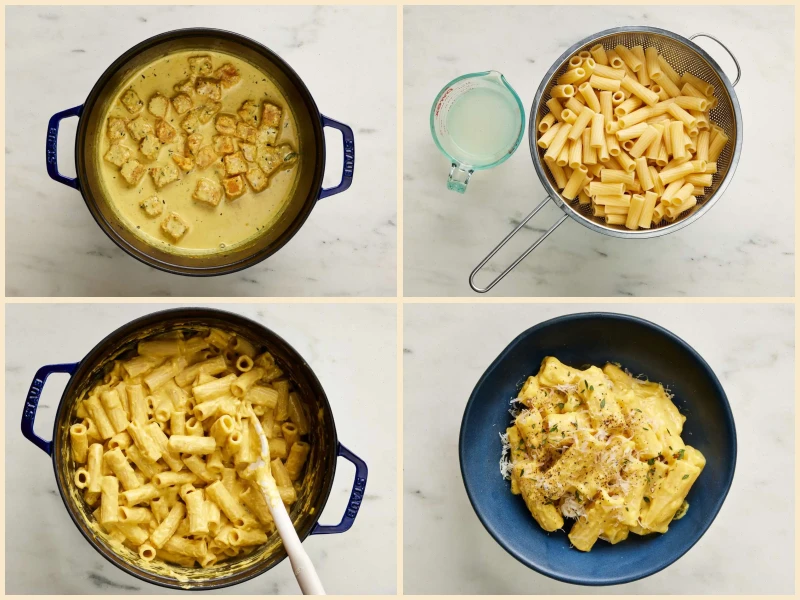
The Origins of Butternut Squash Mac and Cheese
Butternut squash mac and cheese, a modern twist on the classic American comfort food, has its roots in the long-standing tradition of creamy pasta dishes in the United States. Traditional mac and cheese can be traced back to the 18th century, with recipes appearing in both British and early American cookbooks. The incorporation of butternut squash into the dish is a more recent innovation, likely emerging in the early 21st century as chefs and home cooks sought healthier, vegetable-forward alternatives without sacrificing flavor. The natural sweetness and creamy texture of roasted butternut squash make it an ideal substitute for part of the cheese sauce, providing a vibrant color and nuanced taste.
Regional Variations and Preferences
While mac and cheese is beloved nationwide, regional differences influence how butternut squash versions are prepared. In the Northeastern United States, the dish often features sharper cheddar cheeses combined with nutmeg or sage for aromatic depth. In the South, cooks might incorporate smoked Gouda or paprika, emphasizing a richer, slightly smoky flavor. West Coast variations often highlight organic or seasonal squash, using plant-based milk alternatives or lighter cheeses to cater to health-conscious diners. These regional touches reflect both local ingredients and evolving culinary trends across the country.
How It Differs From Similar Dishes
Unlike traditional macaroni and cheese, which relies solely on dairy-based sauces, butternut squash mac and cheese introduces a vegetable puree as a central component. This addition not only adds sweetness and complexity but also reduces the overall fat content while enhancing nutritional value with beta-carotene and fiber. Compared to pumpkin mac and cheese or sweet potato variations, butternut squash offers a milder, less earthy flavor, making it more versatile for pairing with herbs like sage and thyme or cheeses like Gouda and Cheddar. This subtle difference allows it to maintain the comforting familiarity of classic mac and cheese while providing a unique, modern twist.
Typical Serving Settings
Butternut squash mac and cheese is most commonly served in casual home settings, especially during the fall and winter months. It is popular at family dinners, holiday gatherings, and potlucks, where its creamy texture and colorful presentation make it a crowd-pleaser. Upscale restaurants and bistros may feature elevated versions, garnished with roasted nuts, fresh herbs, or breadcrumbs for added texture. Additionally, ready-to-eat versions, such as Trader Joes seasonal offerings, have introduced the dish to a broader audience, making it accessible for quick weeknight meals or as a comforting side dish.
Interesting Facts About Butternut Squash Mac and Cheese
- Butternut squash is not only flavorful but also packed with nutrients, including vitamin A, potassium, and dietary fiber, making this dish a slightly healthier alternative to traditional mac and cheese.
- The dishs vibrant orange hue comes from beta-carotene in the squash, which also contributes a subtle sweetness that complements the sharpness of Cheddar and the smokiness of Gouda.
- Trader Joes popularized a pre-made version that inspired numerous copycat recipes, demonstrating the trend of blending gourmet flavors with convenience food culture.
- Pureeing the squash before combining it with cheese creates a naturally creamy sauce, eliminating the need for heavy cream or excessive butter.
- Herbs like sage and thyme not only enhance flavor but also add a seasonal touch, reflecting the dishs close association with autumn harvests.



